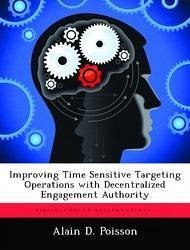Nicht lieferbar

Time-Critical Targeting
Predictive Versus Reactionary Methods, Analysis for the Future
Versandkostenfrei!
Nicht lieferbar
Experiences in Operations Desert Storm and Allied Force have highlighted a significant weakness in the USAF's ability to engage time-critical targets. Major Marzolf introduces and investigates two methods-reactive and preemptive-and determines how they might solve the problem in 2010. Evidence suggests that the USAF is attempting to solve the problem by using the reactive approach, which first detects a target with an intelligence, surveillance, and reconnaissance platform and tasks a loitering-strike platform to kill it. While this is a cost-effective approach from a weapons-employment perspe...
Experiences in Operations Desert Storm and Allied Force have highlighted a significant weakness in the USAF's ability to engage time-critical targets. Major Marzolf introduces and investigates two methods-reactive and preemptive-and determines how they might solve the problem in 2010. Evidence suggests that the USAF is attempting to solve the problem by using the reactive approach, which first detects a target with an intelligence, surveillance, and reconnaissance platform and tasks a loitering-strike platform to kill it. While this is a cost-effective approach from a weapons-employment perspective, it is not efficient for weapons delivery aircraft. Major Marzolf found that even though this approach has long-term advantages, it would not likely be ready for implementation circa 2020, which would be 10 years too late. Evidence suggests that the USAF should pursue persistent area dominance munitions as an answer to the time-critical targeting problem.











